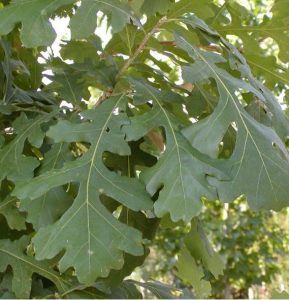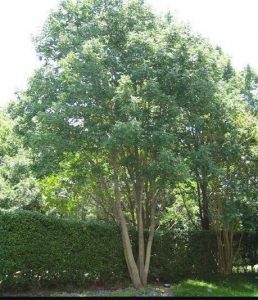Texas Native Trees
Trees thrive when planted in their native environment and Texas native trees are no exception. They don’t need to adapt to new conditions and don’t usually require a lot of extra care. Besides, there’s something special about planting a tree that is really supposed to be there, anyway.
If you are looking for impressive trees native to North Texas, some good choices follow.

Bur Oak
Bur Oak Quercus macrocarpa Because they are North Texas native trees, the bur oak is popular as a shade tree. Its hearty with regards to weather extremes, as it can withstand the heat of August and even the occasional freezing ice storm. They thrive in rich alluvial soils or the thin black soils located above the limestone that found in this area of Texas. On top of all that, bur oak is resistant to many diseases that affect similar trees. And if you are looking for a fast-grower, it’s tough to beat the bur oak. Even with minimal care, it’s common to grow two feet per year, in some cases, three. On the negative side, the Bur Oak produces very large acorns. These large acorns are popular with people making crafts from them and/or their caps. However, if you are a craftsperson, you might think about the almost golf ball size acorns in your lawn.
Cedar Elm
Cedar elm, Ulmus crassifolia Nutt. trees are popular not just as a shade tree, but it also because it tolerates drought and wet conditions. It thrives in a variety of soil types and requires minimal care. This tree serves as both a shade tree and an ornamental tree. It features a sprawling canopy capable of blocking sunlight and yet adds beauty to any landscape. Its light-green-blossom clusters appear in late summer to early fall. However, you must plant with care. Cedar elm requires at least six hours of unfiltered, direct sunlight daily. Also, note that this tree is susceptible to Dutch elm disease. A variety of different wildlife are attracted to cedar elm, including birds and deer.
Eastern Cottonwood
Eastern cottonwood, Populus deltoides gets its name from the female trees that release cotton-like masses of seeds. It’s a relatively fast-growing tree that matures sometimes at 100 feet, with an expansive canopy. It’s found throughout the eastern half of Texas, often growing near water. It requires moderate amounts of moisture, and while it does well in many types of soil, it thrives in in damp soils of sand or sandy loam. On the downside, the eastern cottonwood has a relatively short lifespan of 30-50 years.
North Texas is home to some fabulous native trees. Many will thrive without a lot of extra care. These are good choices if you are looking for some native trees to enhance your landscape, provide some shade or if you’d like to see an increase in wildlife out your kitchen window.

Texas Ash
Texas ash, Fraxinus texensis is one of the native Ash trees in our area. Green Ash, White Ash, and Prickly Ash are also Texas natives. You can find Carolina Ash in Eastern Texas in wet areas. This ash grows 40-50 feet tall classifying it as a medium size tree. Leaves are opposite on the branch with 5 compound leaflets approximately 5″ to 8″ long. The leaves are dark green on top but much lighter underneath. The leaves usually turn brown in early fall. Interestingly, this tree is in the Olive family. The only downside to using this tree in your landscape would be the seeds it produces that will fall into the grass and the fact it is hard to find at a nursery. You make have to make some calls to find this tree in the size you are looking for.
Other Texas Native Trees
Bald Cypress
Bald Cypress is a great Texas native. Read more about Bald Cypress.
